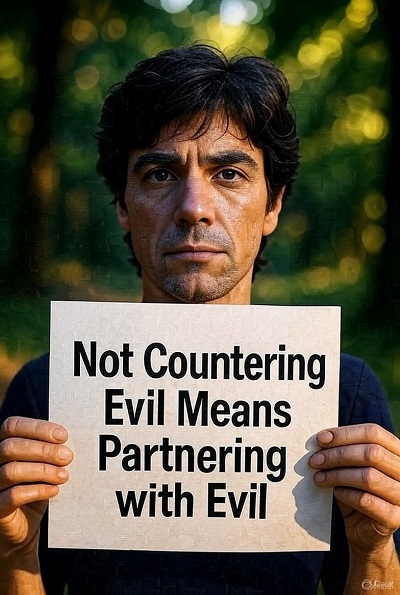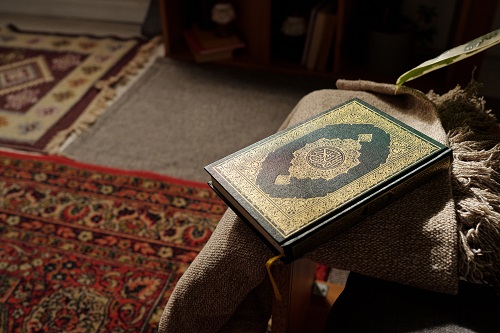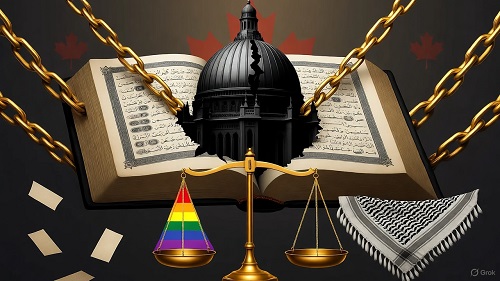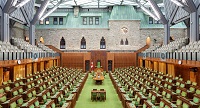Jawed Anwar
In my previous columns, I mentioned that the current Fahisha movement is not limited to the practice of the people of Lot but has introduced an entirely new gender theory.
On July 20, 2005, same-sex marriage became a federal law in Canada. However, even before that, eight out of ten provinces and one of the three union territories had already legalized same-sex marriage through court decisions.
These included Ontario, British Columbia, Quebec, Manitoba, Nova Scotia, Saskatchewan, New Brunswick, Newfoundland and Labrador, and the union territory of Yukon.
The journey began in Ontario, whose capital is Toronto.
In the case of Halpern v. Canada (AG) in 2003, the court legalized same-sex marriage, ruling that limiting the definition of marriage to one man and one woman violated the Canadian Charter of Rights and Freedoms.
https://youtu.be/5MBMJsIieoI
It is worth noting that in 1993, Ontario's Supreme Court had dismissed a similar request in the case of Layland v. Ontario.
In 1994, the provincial government proposed granting civil union status to same-sex couples under the Equality Rights Statute Amendment Act. However, the bill did not pass.
In October 1999, the Ontario Legislative Assembly passed a bill granting same-sex couples the same statutory rights as heterosexual common-law spouses
This was under the Progressive Conservative government led by Premier Mike Harris.
On July 12, 2002, the Ontario Supreme Court, in the Halpern v. Canada (AG) case, ruled 3–0 in favor of allowing same-sex couples to marry.
However, there was stay order on the decision. In 2003, same-sex couples involved in the Halpern case appealed to the Court of Appeal for Ontario, seeking immediate permission to marry.
The court lifted the stay, citing Section 15 of the Canadian Charter of Rights and Freedoms, referring Equality Provisions.
Following this, on February 24, 2005, Ontario's Legislative Assembly aligned with the Supreme Court decision passed a bill that became law on March 9, 2005, with Royal Assent.
This law ensured that religious organizations and clergy could not be compelled to perform marriages against their beliefs though this provision did not apply to civil officials.
By this time, the Liberal Party of Ontario, led by Premier Dalton McGuinty, held a majority in the assembly.
The federal Liberal government, though a minority under Prime Minister Paul Martin, was ready to push Bill C-38.
The bill was introduced in Parliament on February 1, 2005, following a Supreme Court opinion confirming that same-sex marriage was consistent with the Charter of Rights and Freedoms. It quickly passed through Parliament and became the Civil Marriage Act on June 28, 2005.
Despite opposition from Alberta's Conservative Premier Ralph Klein, who demanded a national referendum, the proposal was rejected by all four federal party leaders, including Prime Minister Martin.
The bill passed in the House of Commons with 164 votes in favor and 137 against during the second reading on May 4 and 158 votes in favor and 133 against during the third reading on June 28. The Senate approved it on July 19, and it received Royal Assent the following day, becoming law.
Notably, Conservative Party leader Stephen Harper vowed to continue opposing same-sex marriage, even after it became law. The vote in the House of Commons was open, meaning members were not bound to follow party lines.
Here’s how members voted:
Liberal Party: 95 in favor, 32 against.
Conservative Party: 3 in favor, 93 against.
Bloc Québécois: 43 in favor, 5 against
NDP: 17 in favor, 1 against.
Independents: 2 against.
The NDP has been the strongest supporter of Fahish laws, followed by the Liberal Party.
Very soon, the NDP and Liberals were completely united on this issue. Under Harper’s leadership, the Conservative Party won the January 23, 2006, election but lacked a majority. Despite Harper's promise to reopen the debate, his cabinet members were divided, and a motion to revisit the issue was defeated 175 to 123 on December 7, 2006
Harper later stated he did not foresee this question reopening in the future.
It’s important to note that even the 2005 Civil Marriage Act allowed religious groups to refuse to perform marriages against their beliefs.
Dear brothers and sisters, in our view, the legalization of same-sex marriage is the mother of All Evil Laws, both religiously and socially. This law has since paved the way for numerous provincial and federal laws promoting this lifestyle while limiting the rights of traditional families and religious households.
Anyone living in Canada or the West, or considering migrating there, must understand these laws and their implications for their families and children.
Reflect on Dr. Zakir Naik's visit to Pakistan, where he said that entering Al-Jannah is much easier from Pakistan than from America.
Consider this, especially those who have not yet migrated. However, I would say that if you live in North America or Europe and are fulfilling your duty of enjoining good and forbidding evil with excellence, striving for the establishment of the Deen, and providing the best Deeni upbringing for your family and children, then there is no need to leave.
Your chances of entering paradise are far greater than in most Muslim countries.
Our Social Media:
YouTube/AsSeerah
Twitter: X/AsSeerah
Telegram: t.me/AsSeerah
What's App Channel:
https://whatsapp.com/channel/0029Vas8OW13mFYCMzcAZl10
Facebook:AsSeerahWeb
E-mail: AsSeerah@AsSeerah.com







